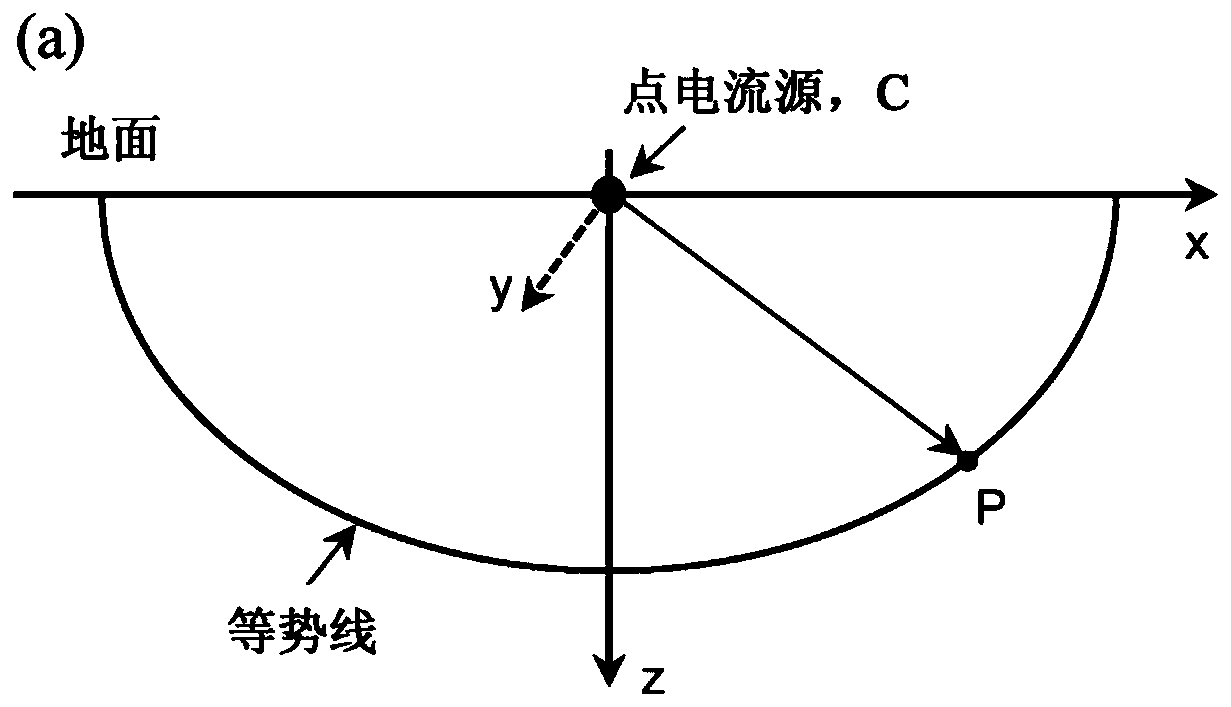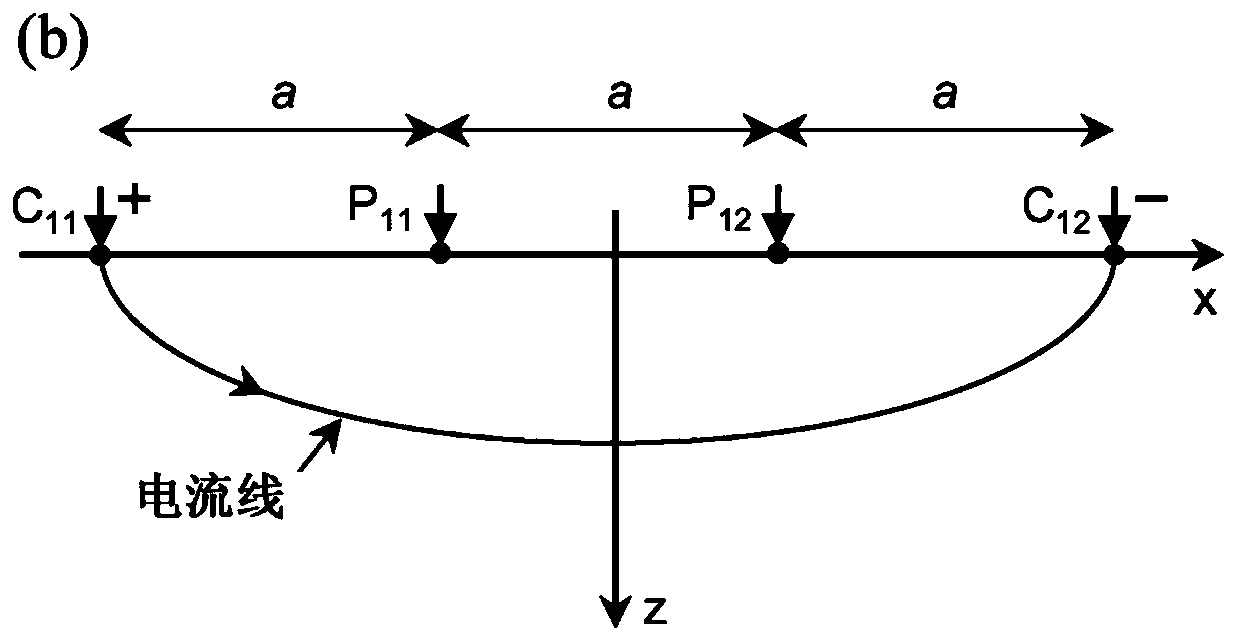Resistivity measurement cell measuring electrical resistivity anisotropy of unsaturated soil
A measuring unit and resistivity technology, applied in the direction of measuring resistance/reactance/impedance, measuring electrical variables, measuring devices, etc., can solve the problem of expensive, difficult, and inability to measure resistivity anisotropy in unsaturated soils with anisotropic resistivity And other issues
- Summary
- Abstract
- Description
- Claims
- Application Information
AI Technical Summary
Problems solved by technology
Method used
Image
Examples
Embodiment 1
[0049] Embodiment 1. A resistivity measurement unit, comprising:
[0050] a first measurement array arranged in a first direction; and
[0051] a second measurement array arranged in a second direction,
[0052] Wherein, the second measurement array includes a first point current source, a second point current source, a first point potential electrode, and a second point potential electrode; and
[0053] Wherein, in the third direction, each of the first point potential electrode and the second point potential electrode is placed at a measurement depth different from that of each of the first point current source and the second point current source (for example , in the third direction, the measurement depth of the first point potential electrode and the second point potential electrode may be lower than the measurement depth of the first point current source and the second point current source).
Embodiment 2
[0054] Embodiment 2. The resistivity measurement cell according to embodiment 1, wherein the first point current source, the first point potential electrode, the second point potential electrode and the second point potential electrode are arranged in any type of array (for example, in series). current source.
Embodiment 3
[0055] Embodiment 3. The resistivity measurement unit according to any one of embodiments 1-2, wherein the horizontal spacing in the second direction between the first point current source and the first point potential electrode is the same as that between the first point current source and the first point potential electrode. The vertical spacing in the third direction between the first point potential electrodes is the same.
PUM
 Login to View More
Login to View More Abstract
Description
Claims
Application Information
 Login to View More
Login to View More - Generate Ideas
- Intellectual Property
- Life Sciences
- Materials
- Tech Scout
- Unparalleled Data Quality
- Higher Quality Content
- 60% Fewer Hallucinations
Browse by: Latest US Patents, China's latest patents, Technical Efficacy Thesaurus, Application Domain, Technology Topic, Popular Technical Reports.
© 2025 PatSnap. All rights reserved.Legal|Privacy policy|Modern Slavery Act Transparency Statement|Sitemap|About US| Contact US: help@patsnap.com



